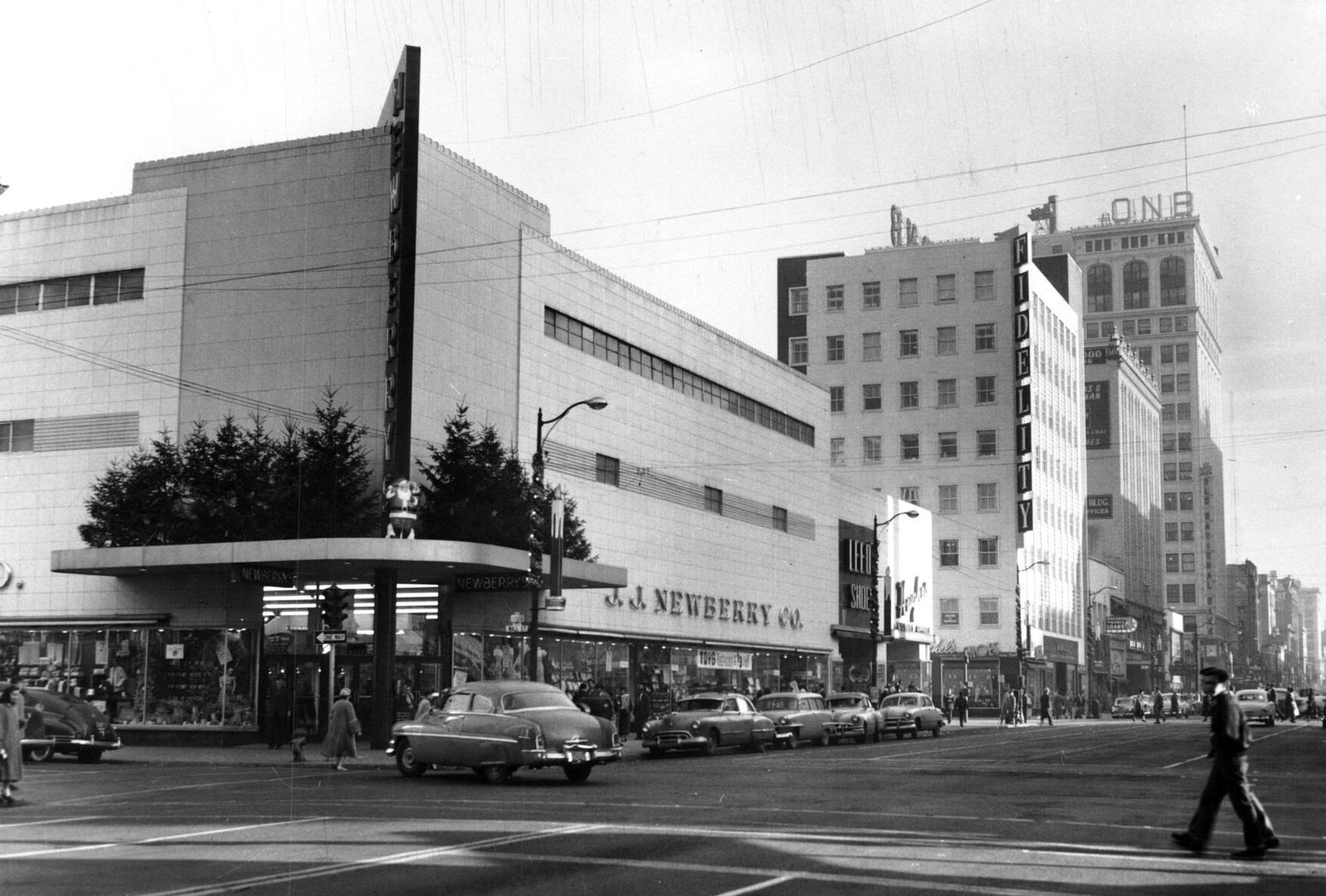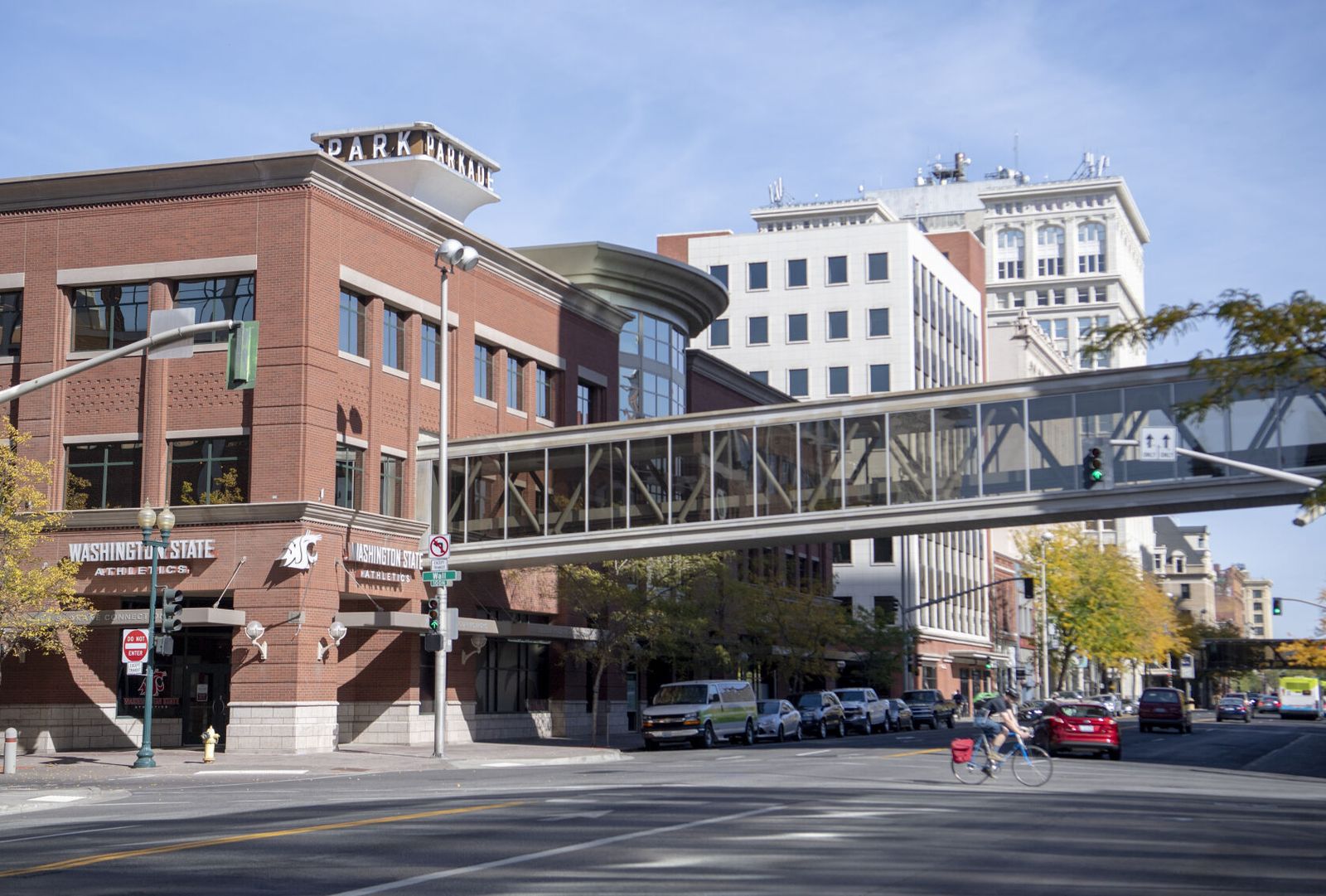
Then and Now: J.J. Newberry's
J.J. Newberries was one of Spokane's favorite and longest lasting five-and-dime stores in Spokane.
Section:Then & Now
Then and Now: J.J. Newberries
By the late 1800s, American entrepreneurs created a revolution in retail business with the nickel-and-dime stores. Businessmen like Frank W. Woolworth, Samuel Henry Kress, Sebastian Spering Kresge, William T. Grant and Sam Walton pioneered discount retailers that would last well into the 20th century, if not the 21st century.
John Josiah Newberry, born in 1877, worked for the railroad as a teenager, then started his first store in 1911 in Stroudsburg, Pennsylvania. With his brothers in management, the Newberry chain grew quickly. In 1928, the Newberry company took over Britt’s Department Store, a chain founded in the Northwest in the early 1900s. The Britt’s in Spokane was rebranded as J.J. Newberry in 1930, filling the Wolverton building at Wall Street and Riverside Avenue. In 1946, a new Newberry was built and other on the same block completed in 1950.
The formula was low prices, only nickels and dimes. Similar to Woolworths, Kress and others, there was a lunch counter with simple fare like grilled cheese sandwiches and soups for mere pocket change. A 1938 lunch counter menu offered fried chicken, mashed potatoes, peas, coleslaw and a roll for 25 cents.
Many stores also sold small pets, like goldfish and hamsters, and pet supplies. In the 1930s, the Newberry store often had a piano player demonstrating sheet music for sale.
The Wolverton building, the location of Britt’s five cent to one dollar stores before Newberry’s took over the chain, was torn down in 1946, and a new Newberry store took half the block. Around 1950, the other end of the block was torn down, and the Newberry store stretched its presence to Howard Street.
The dime stores, whose popularity peaked in the post-World War II period, declined through the 1960s and 1970s as suburban shopping centers and malls proliferated. When J.J. Newberry died in 1954, the chain had 475 stores.
The U-City Newberry closed in 1991, and the downtown store closed in 1995. The dime store concept splintered into convenience stores, drugstores, and others. Some, like Kmart and Walmart, became big-box retailers. The last Newberry store, in Portland, closed in 2001.
Share on Social Media

